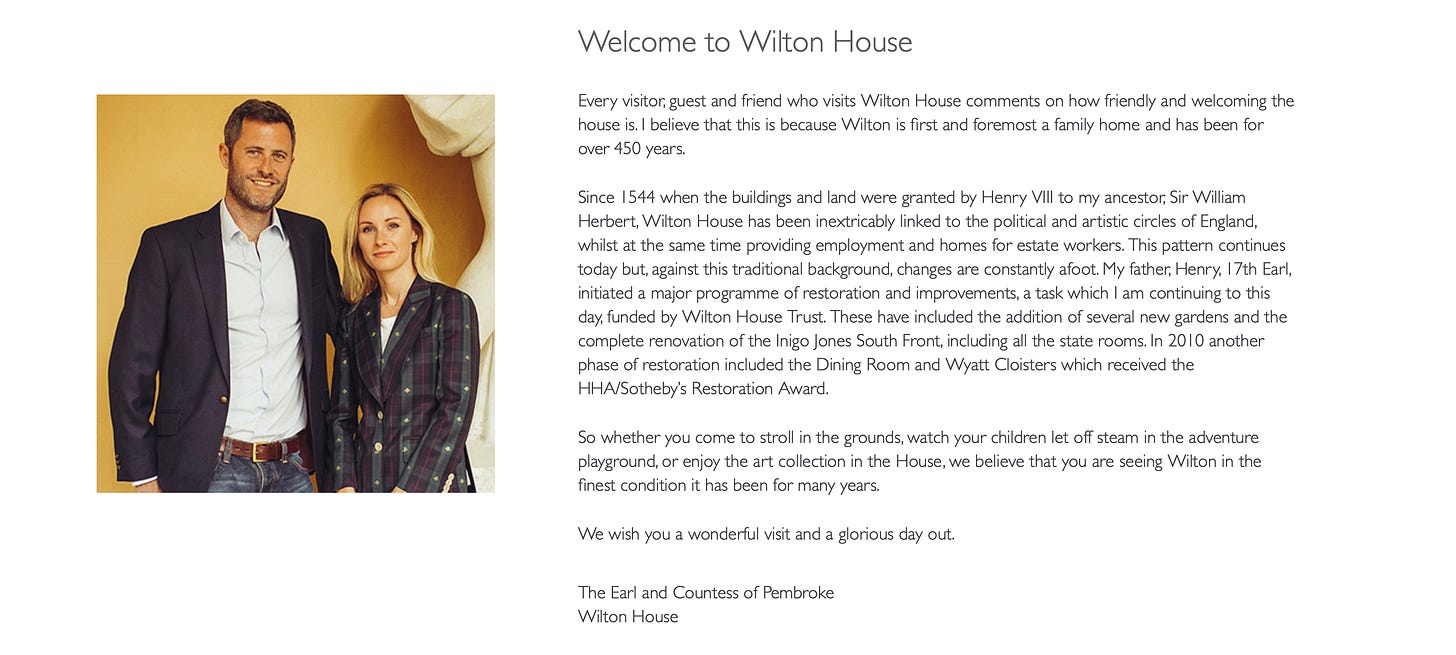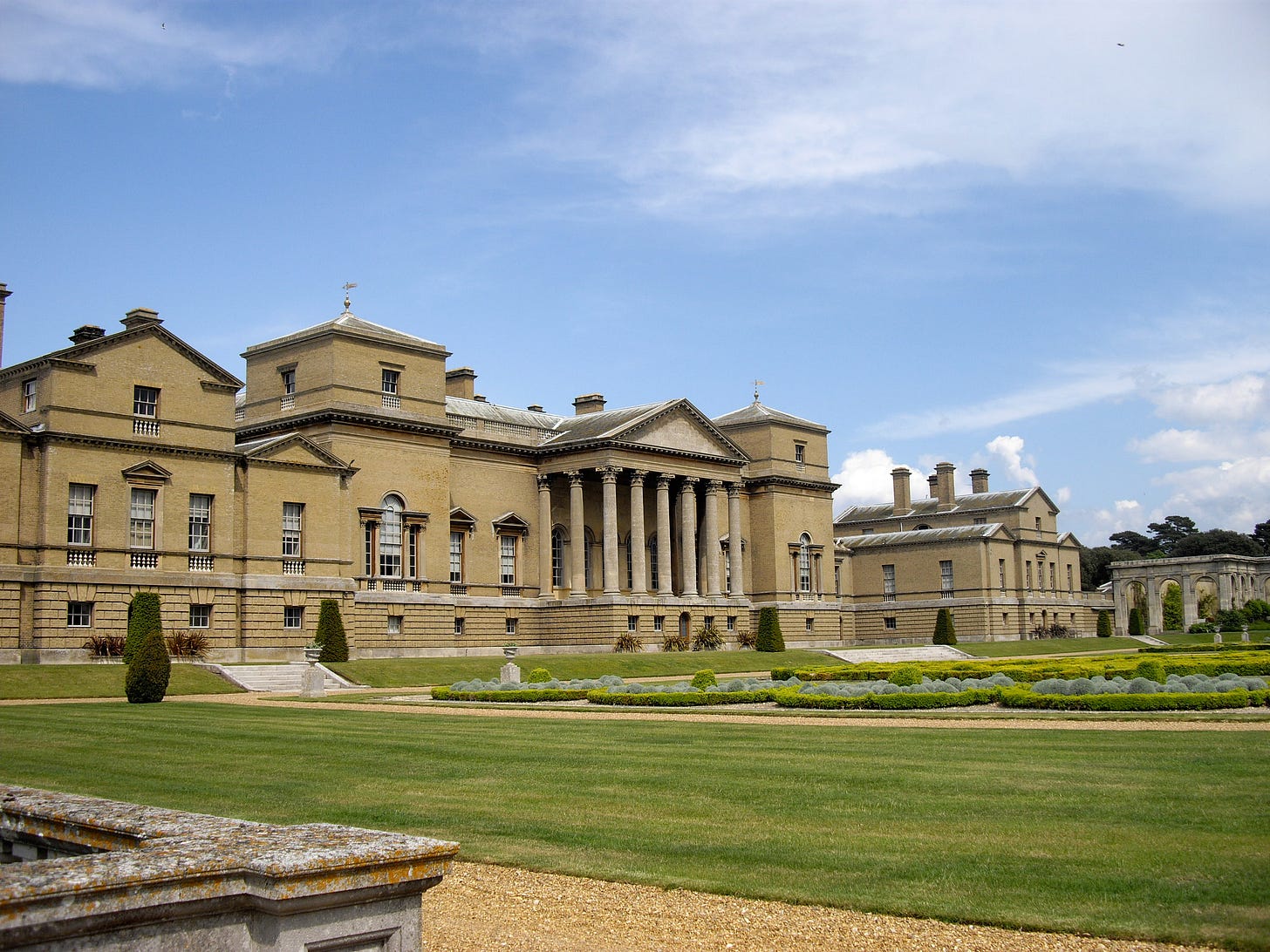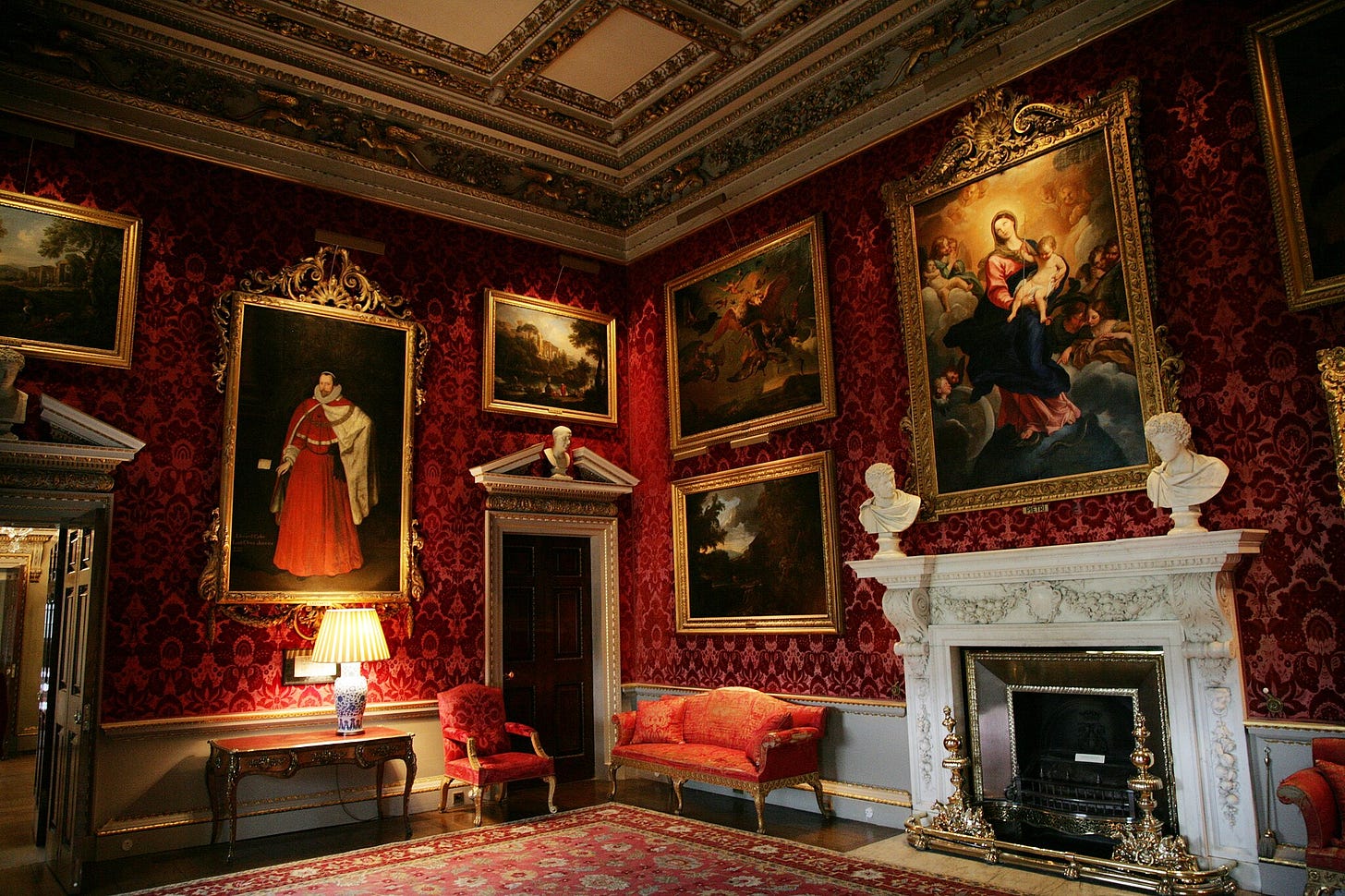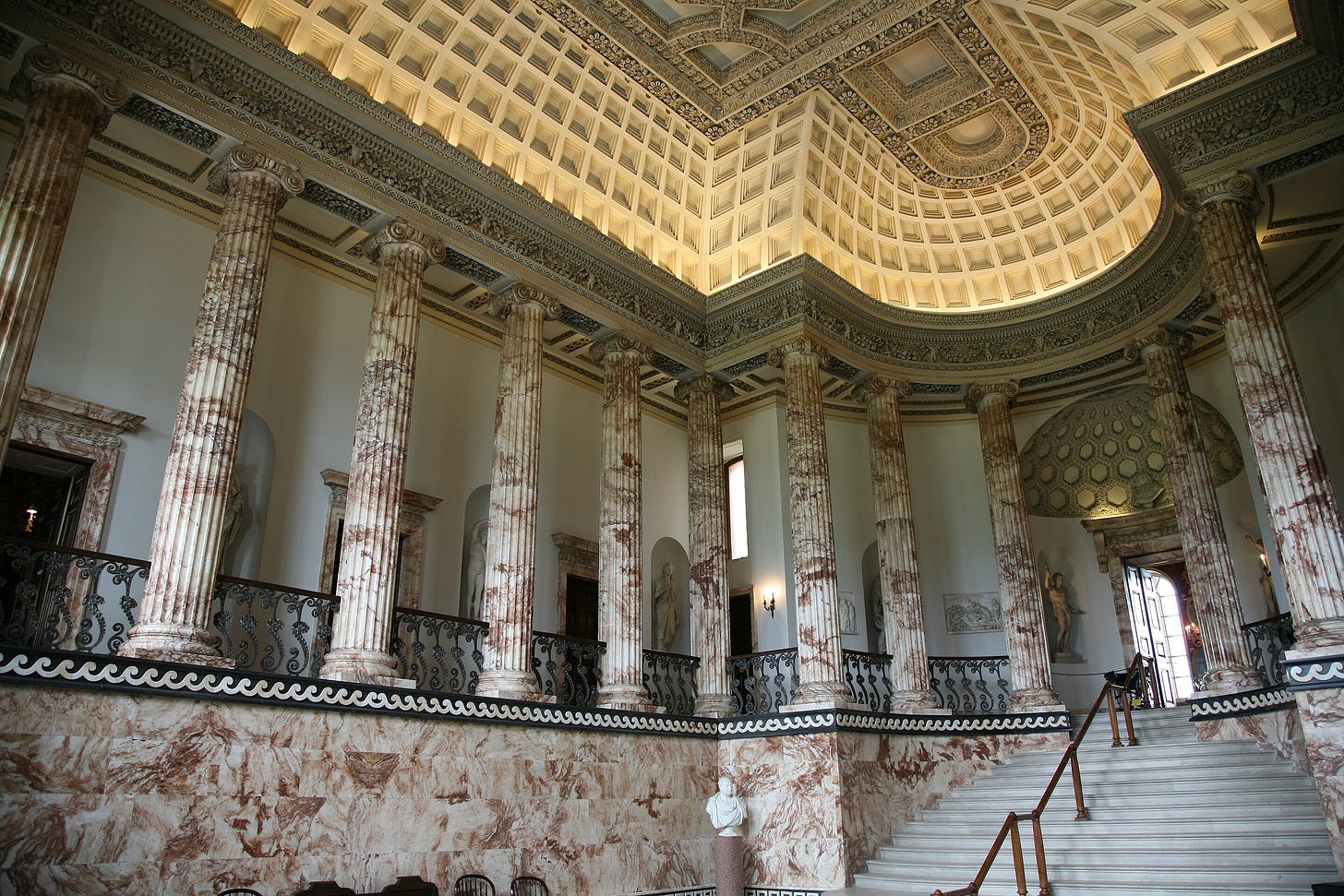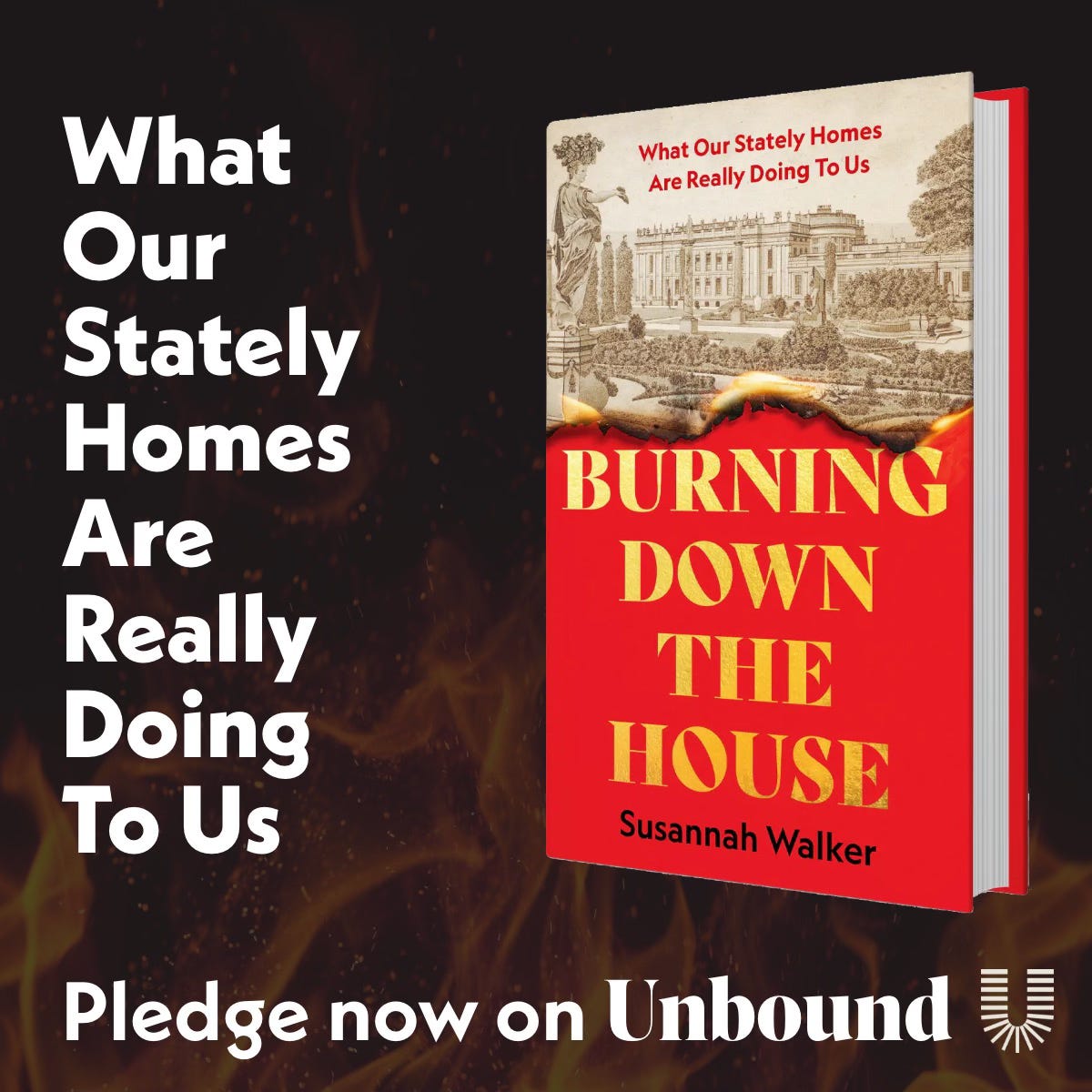Despite my best efforts, I can’t stay away from the Great Houses account on Twitter and Instagram. This isn’t just because it is a gloriously stereotypical embodiment of every single received opinion about stately homes, although that’s reason enough. It also seems to be a kind of grit to my own personal oyster, because getting irritated with Man In a Barbour forces me pull together my own thoughts in order to disagree with him.
I haven’t even moved on from the post that I was looking at last time. What MIAB goes on to say is that these houses are, above all, family homes.
This is very much what the owners would like you to believe. In nine out of ten guidebooks, the front page consists of the owners (usually with their labradors or ponies included) welcoming you to what is, after all, still their family home. Websites peddle a similar line.
Yes, and at the same time no. I’d also very much question the friendly and welcoming aspect to these spaces, and we’ll get to that in a minute.
Stately homes do indeed house one family, over several generations and they live there, for some of the year. But that isn’t the only purpose of these buildings, and hasn't ever been.
We can demonstrate this by taking a look at Holkham, which is an extreme version of the eighteenth century stately home in having four separate pavilions arranged around one central core building.
While this isn’t entirely visible from the front, which looks like a Victorian docks warehouse with a portico, it’s very clear on the plan.
One of these pavilions houses the kitchen, to keep the fire risk well away from the expensive furniture and paintings. Another is the guest wing. And the one on the top right is the family quarters. In the case of Holkham, this is an entirely self-contained house on its own. It was the first part of the house built - and the family lived in just this bit quite happily - and it’s still where the Cokes live now.
So, if that’s the family home section, what’s all that big bit in the middle doing? The answer is State Rooms. Almost every stately home has them (there’s a clue in the name there). These are the big posh rooms designed for a) showing off to visitors and b) hosting a member of the royal family on the off-chance that they might ever turn up for a visit. These are not spaces that were ever meant for living; they are entirely designed for lording about.
Almost all stately homes follow this arrangement, even if it’s not always immediately visible from the layout. Visitors to Longleat, for example, see the State Rooms, but the house also contains a set of interlocking apartments, in which various members of the family live entirely separate lives. And when you are inside one of them, the hubbub of mazes and cafes and bouncy castles outside almost disappears.
Once you understand this, a whole lot of things about these big houses become much easier to understand. Firstly, this is why there have been visitors admitted to stately homes ever since the eighteenth century - because it doesn’t much inconvenience the family. They are living in their private quarters, while the visitors are shown the state rooms and emerge suitably cowed
The second is that this is what the houses are designed to do. They are not friendly and welcoming. I mean, just look at the Hall which is the entrance to Holkham. It is cold, vast and clearly hoping to intimidate.
And that’s what we’re admitted to see. Not the family home. So put that in the exhaust pipe of your vintage Landrover.
But there’s another interesting point to note about our friend from the Great Houses and his thoughts. While these films get some traction on Twitter, and quite a lot of fawning on Instagram, TikTok is another story altogether. Over there, the man, his Barbour, his accent and his cap are getting a much rougher ride - here are just a few examples, none of which he has replied to so far.
Where did the cash come from to build this house originally was it the Opium trade or the Slaving Trade. So much honour 🙄
Since the houses and land were acquired and given during fuedal era conquest and enriched by the tax and work of serfs perhaps it is time to have them seized/museum converted/ returned to the people.
Buggers stole wealth from around the globe and within their own country and now crow about their obligation. 😏
Although my total favourite is on another film about houses being so much more than bricks and mortar.
Funded by the spoils of colonial plunder, symbolizing theft, murder, & devastation of nations. Their legacy, a testament to cultures erased and lives shattered—a history of shame, not pride!
Genuinely, I could use that on the cover of the book.
More seriously, these comments demonstrate that attitudes are shifting, and that a younger generation is considerably less inclined to fall for the beauty and heritage line. David Olosuga pointed this out brilliantly a couple of years ago.
The cliché of the stately home visit now is that the parents are looking at the furniture and paintings while the children are googling where the money came from.
Too right. And this gives me hope that when the book does come out, the message isn’t going to fall on entirely stony ground.
All of which is a neat little segue into my regular reminder that Burning Down the House is being published by Unbound, and now is your chance to pledge for a copy in advance and get your name in it and make sure that it happens quickly. Thank you. And it’s payday, incidentally.
Pictures mine or Wikimedia Commons…



